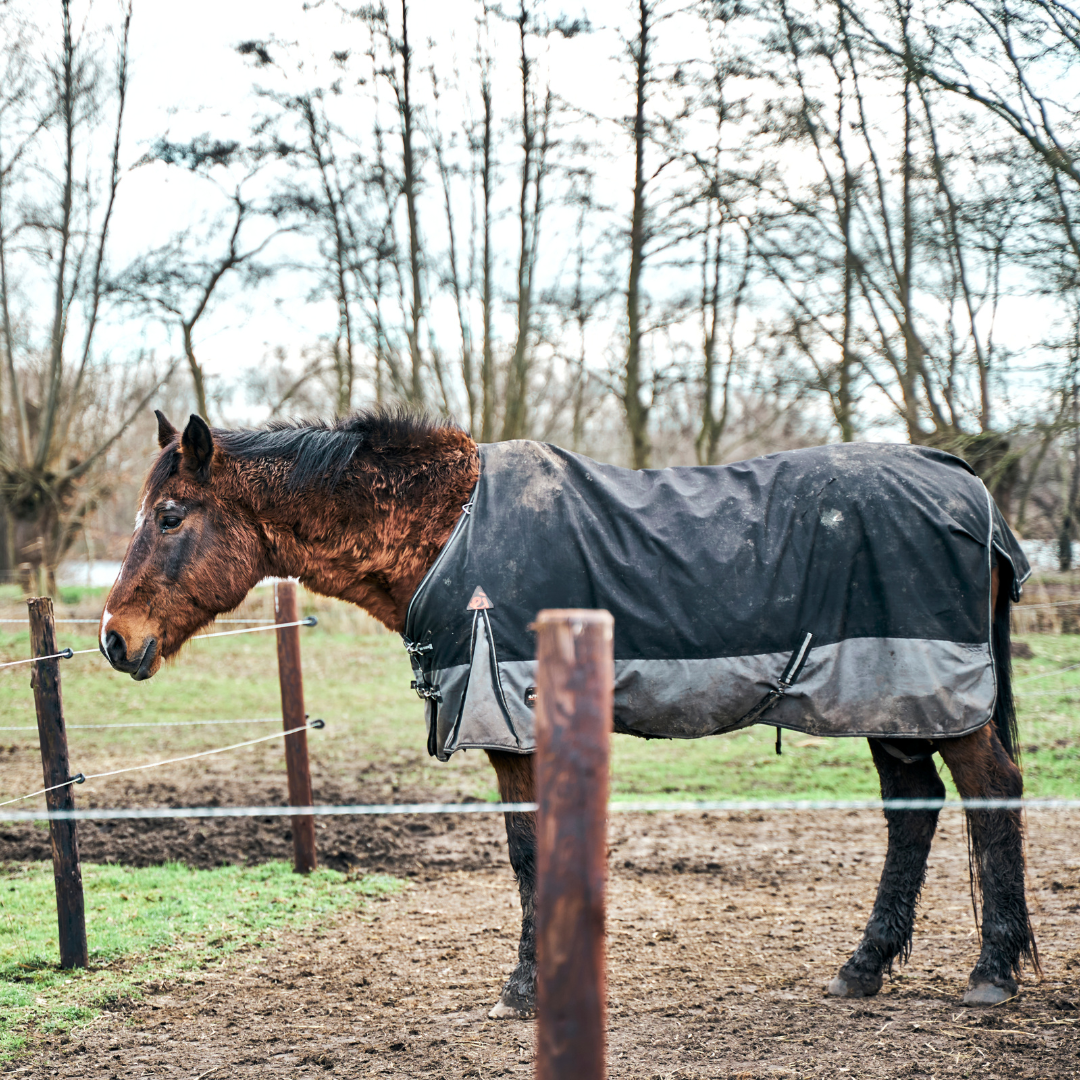MUD - MORE THAN JUST A MESS!

After months of dry weather in summer, rain is usually a welcome change. But once the rain sets in, the ground can quickly turn into mud, with paddocks and yards turning into a boggy quagmire.
Mud causes mess – on our horse’s woolly coats; their rugs; our boots; pet’s paws – and this translates to mud on our floors, pathways, breezeways and wherever else any of us (people, horses or other pets) deign to tread.
Just as the hotter months demand our attention for our horse’s hydration, shade, insect protection and heat stress, the wetter months, with mud, have their own challenges for management of our horses.
While we are likely to be warm and dry inside, muddy boots off at the door, keeping the mud outside - this is not an option for our horses. So what can we do?
You could keep your horse confined indoors to avoid the mud altogether, but I wouldn’t recommend it. Not only is it impractical if you want to be working your horse during the wetter months, but it poses considerable risks to your their well-being. Long hours of restricted movement are not only bad for our horse’s joints and muscles, but it’s also detrimental to their mental well-being.
Assuming that you turn your horses out during the muddy season (whether it be all day, or part of the day), they’re going to get muddy. So what are the risks? And what can you do to protect them?
What risks does mud pose for our horse?
With the wetter weather fungi and bacteria thrive and this can lead to all sorts of issues. While it is often a relief after long dry periods to finally have some softening of the horse’s sole from the increased moisture, this poses increased risk of bruising, abscesses, thrush, white line disease, cellulitis, pastern dermatitis and lymphangitis.
Mud can also make footing slippery and uneven, potentially leading to injuries in ligaments or tendons, and deep mud can “suck” shoes off your horses’ feet.
Rain scald and fungal infections can be prevalent when horses become damp or overheated and sweaty under rugs in the wet weather.
Interestingly, something I hadn’t considered, but found in the Horse & Rider article “Vet’s Top 10 Mud Tips” (see link in Articles below) is the risk of fly-borne disease. The combination of mud and warmth (especially when manure is also involved and during the wet, but warmer months) provides the perfect environment for flies.
So what can you do to protect your horse?
Managing your paddocks and yards to reduce mud can significantly minimise the risks of mud related health issues for your horse. Ensuring that run-off from gutters, water troughs and other sources is not feeding into your paddocks is a good start. Identifying where water accumulates and installing run-offs away from grazing areas is also another way to reduce paddock mud. It is also advisable to provide mud free zones when feeding your horse in the paddock.
Unfortunately, even a small amount of hoof traffic can create mud, so you won’t be able to eliminate it altogether. But there are also ways to manage your wet weather grooming and hoof care to reduce the likelihood of issues. Here are my tips:
- Ensure your horse’s rugs don’t get wet – yes they’ll get wet on the outside – but check inside. Trapped moisture under a rug can be a fast track to fungal skin infections. If they’re wet, change them
- Check your horse’s feet regularly. Not only for obvious signs of damage or infection, but also to remove the mud packed into their hooves that can cause pressure on the sole
- Remove dry caked on mud (gently) from your horse’s legs and coat. When the wet mud dries, it can pull the hair and create painful pulling and if left, can cause sores or balding
And if any issues arise, promptly treat the condition
If you've got tips for managing mud - feel free to add a comment.
🐴Together - making our horses’ lives better – Yvette
Articles: I’ve included articles below that you might find interesting in your quest to manage mud with your horse.
How to Manage Mud in your Horse’s Paddock – [Step-by-Step Guide] by Dr Samantha Bohlman, Ph.D. 17Nov22 (revised 28Apr25)
Horse & Rider – Vet’s Top 10 Mud Tips by Barbe Crabbe, DVM, 5Aug22
Your Guide to Mud Fever - Horseland, 12Aug22
Disclaimer: These are my thoughts and opinions and should not be considered expert or medical advice. I recommend that you seek professional advice in relation to your horse/s.
